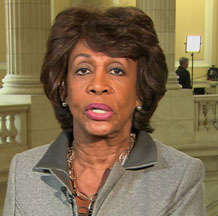February 2 – February 15, 2017
On The Dock This Issue:
The End of White Christian America
In 2008, when Obama became president, 54 percent of Americans self-identified as White Christians. That percentage fell 11 points in eight short years.
Gee’s Bend Quilts – A Black Collectible
Their isolation fostered the necessity to use materials on hand to make needed items such as quilts to stay warm during cold nights and ironically produced a creative vacuum for the quilters.
Features
Four Oscar Nominations for Best Picture Go to Films with Disability Connections
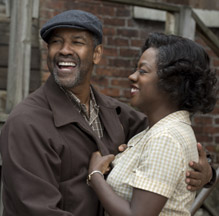 Denzel Washington is nominated for best actor for his portrayal of Troy Maxson, a former Negro League ballplayer and trash collector. Viola Davis, as his wife Rose, is up for best supporting actress.
Denzel Washington is nominated for best actor for his portrayal of Troy Maxson, a former Negro League ballplayer and trash collector. Viola Davis, as his wife Rose, is up for best supporting actress.
Of the nine films nominated for Best Picture, four have themes or sub-plots related to disability.
“Fences
,” a film that has received multiple accolades for its racially diverse themes, also includes a disability storyline. Lead character Troy Maxson (Denzel Washington)’s older brother Gabe Maxson (Mykelti Williamson) sustained a traumatic brain injury (TBI) during World War II. Children in the neighborhood often torment Gabe. When Troy bails Gabe out of jail for disturbing the peace, Troy unknowingly signs a paper that routes half of Gabe’s pension to a psychiatric hospital, forcing Gabe to be institutionalized.
Other examples include “Manchester by the Sea
,” which includes themes of mental health, alcoholism, and drug use. Likewise, “Moonlight” includes story lines surrounding drug addiction. “Arrival,” a science-fiction film, includes a child who dies from cancer.
But while these films include disability themes, no known actor or other individual with a disability was nominated for an Oscar. More than 95 percent of characters with disabilities are played by able-bodied actors on television. When an able-bodied actor mimics someone from any minority group, whether it be racial or disability, he takes a job from an actor who genuinely has that characteristic and perpetuates that group’s under-representation in the industry.
One film that exemplified the positive portrayal of disability this year is “Finding Dory,” yet it was not nominated for an Oscar. It was the number one film at the domestic box office last year. Financial successes like this film show that positive portrayal of disability is a winning theme. In “Finding Dory,” disability is not something Dory needs to overcome, but something she needs to learn to live with, accept and work with to accomplish things “in her own Dory way.”
Including Disability in Diversity
“Fences,” as well as “Moonlight” and “Hidden Figures” are films nominated for best picture that have been noted to be racially diverse. In addition, six Black actors have received a nomination, which is a record high.
“The studios and major film distributors really gave it to us this year,” said Gil Robertson, the African American Film Critics Association’s co-founder and president. “By any measurement, it’s been an exceptional year for Blacks in film. From comedies to high-quality dramas and documentaries, 2016 will forever represent a bonanza year for Black cinema, and all cinema really.”
When an able-bodied actor mimics someone from any minority group, whether it be racial or disability, he takes a job from an actor who genuinely has that characteristic and perpetuates that group’s under-representation in the industry.
In a statement, Robertson also spoke of the importance of other minority communities, listing out the “Asian, Hispanic, Native American, and LGBT communities,” but he failed to include the disability community – a common occurrence even among the best intentioned.
People with disabilities are the largest minority in America, with almost one-in-five Americans having a disability. Yet the disability community often is forgotten in diversity conversations. According to GLAAD, fewer than two percent of scripted television characters (15) have disabilities.
In addition to the lack of representation in general, what does exist is misleading. Almost all portrayals of people with disabilities in media are White, despite the fact that disability impacts all ethnicities. According to a recent report by The Media, Diversity, & Social Change (MDSC) Initiative at University of Southern California’s Annenberg School for Communication and Journalism, only 2.4 percent of all speaking or named characters in film were shown to have a disability in 2015 and none of the leading characters were from underrepresented racial or ethnic groups.
“Depictions of disability are not only marginalized,” the report says, “they also obscure the true diversity of this community.”
It is important to note that anyone can join the disability community at any point in time and that people with disabilities come from all communities – including the African American, Asian, Hispanic, Native American and LGBTQ communities.
.


The End of White Christian America
By Wayne A. Young
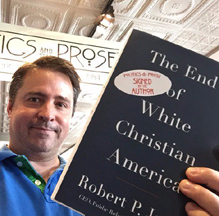 Though Blacks are affected by the expansion of LBGT rights and the increase in the number of immigrants, Blacks have not absorbed the “same type of loss or loss of status,” as European-Americans.
Though Blacks are affected by the expansion of LBGT rights and the increase in the number of immigrants, Blacks have not absorbed the “same type of loss or loss of status,” as European-Americans.
In 2008, when Barack Hussein Obama, became the first non-White president of the United States, 54 percent of Americans self-identified as White Christians. That percentage fell 11 points in eight short years to 43 percent says Robert P. Jones, CEO of the Public Religion Research Institute and author of "The End of White Christian America."
Jones spoke at the historic “Church of Presidents,” St. John's Episcopal Church, across from the White House. During the after church program, he added that Donald Trump “was able to capitalize on” these grand shifts in American demographics and the “fear and loss” it has triggered. It’s a fear that “people on the left don’t understand,” he warned.
The shifts, he explained, came from many fronts. It was the Supreme Court that aided the shift with the affirmation of same-sex marriage. In less than a decade, American support for marriage equality has shifted from 40 percent to 60 percent.
There are no Protestants on the Supreme Court, only Catholic and Jews, he pointed out while predicting that Trump would nominate a Protestant. (If Neil Gorsuch, an Episcopalian, joins the Supreme Court, he would be the first Protestant member since 2010. Merrick Garland, Obama's choice, is Jewish.)
He also pointed out another statistic: Forty percent of young people now claim no religious affiliation, largely because of how traditional churches have reacted to science and LGBTQ issues. White evangelicals, he surmises, really lost the cultural wars “over LGBT” issues.
In addition, immigration to the United States is up and the birthrate amongst Whites is down.
“Faith and culture,” shape our values he says.
However, Jones admits that the “light bulb,” finally came on for him only after Trump won the South Carolina primary, where 75 percent of White Republicans are Evangelical Christians. Nationally, while White Evangelical Christians were 21 percent of the population in 2008, they are now only 17 percent of the population. They have remained strong voting participants, however. Despite their decline in population, they have remained being 26 percent of all persons who vote, he continued.
Blacks on the other hand, he says, continue to be about the same percentage of the national population. And though they are affected by the expansion of LBGT rights and the increase in the number of immigrants, they have not absorbed the “same type of loss or loss of status,” as European-Americans he said when answering Port Of Harlem's question on why Black have not attached themselves to Trump’s message.
The struggle to return to the 1950s will continue and so will the inclusive struggle. When and where will it end? “Donald Trump is not a long-term plan,” continued Jones, who was born Southern Baptist in Macon, Georgia and traces his family to the 1700s. He starts his book with an obituary and ends with an eulogy.

Nominate A Young Hero for A $5,000 Barron Prize!
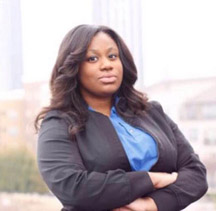 Mary-Pat created Think Twice, a national billboard campaign featuring graphic ads that encourage teens to think twice before picking up a gun
Mary-Pat created Think Twice, a national billboard campaign featuring graphic ads that encourage teens to think twice before picking up a gun.
The Gloria Barron Prize for Young Heroes celebrates inspiring, public-spirited young people from diverse backgrounds all across North America. Established in 2001 by author T.A. Barron, the Barron Prize annually honors 25 outstanding young leaders ages 8 to 18 who have made a significant positive impact on people, their communities, or the environment. The top fifteen winners each receive $5,000 to support their service work or higher education. Applications are accepted online only and are due by April 15, 2017.
For more information, click here.
Here is the story of Atlanta’s Mary-Pat, a 2015 winner:
Mary-Pat created Think Twice, a national billboard campaign featuring graphic ads that encourage teens to think twice before picking up a gun. She began her work in 2013 by researching other “shock ad” campaigns such as the hugely successful one discouraging cigarette use. She set her sights on having Think Twice billboards in her first city by 2014 and assembled a group of her peers to help make that happen.
Mary-Pat and her team held focus groups with have-been shooters, would-be shooters, and family members of victims. They spoke with grieving mothers, asking to use the images of their sons and daughters – including ones taken at their funerals – in order to save other lives.
Mary-Pat began calling advertising agencies for help in creating and placing billboards and didn’t receive a single return phone call. That’s when she decided to fly to Chicago for a surprise visit to Burrell Communications, one of the world’s leading African-American advertising firms – and located in one of the world’s most violent cities.
The COO was so impressed with Mary-Pat’s moxie and determination that she met with the teen herself and helped her create a budget and find funding opportunities. When Mary-Pat won a $50,000 Peace First Prize, she finally had her seed money and by July of 2014, had placed 35 Think Twice billboards across Atlanta.
Mary-Pat has traveled to nearly 30 states and spoken to more than 200 youth groups and schools, asking young people to Think Twice. She also serves as youth co-chair for Cities United, a group of 38 mayors working on the issue of gun violence, and as National Youth Director of the Reverend Al Sharpton’s National Action Network, promoting civil rights. “I was tired of attending more funerals than graduations and realized that change starts with me,” says Mary-Pat. “With dedication and perseverance, you truly can bring awareness to a problem.”

Post-Obama
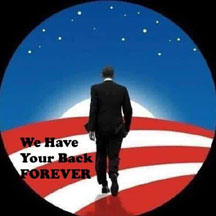 Keep in touch with the president for life, Barack Obama.
Keep in touch with the president for life, Barack Obama.
Keep in touch with the Obamas:
Sign up here to learn more about President and Mrs. Obama's post-presidential work and to stay in touch.
Video:
Thank You President Obama
Eight years after the release of the anthology “Go, Tell Michelle: African American Women Write the New First Lady" (SUNY Press, $17.95), which included two-time Port of Harlem cover model Donna Smith and Port of Harlem subscriber Arabella Grayson of California, St. Martin’s Press has released “The Meaning of Michelle" ($24.99).
Contributors to this closing anthology include a few men such as Marcus Samuelson. It also includes an interesting piece from Chirlane McCray, the first lady of New York City. “Some people might think two Black First Ladies would have a lot talk about,” wrote McCray, as she let us in on their moment together.
Our Space
Gee’s Bend Quilts – A Black Collectible
By Celeste Davis
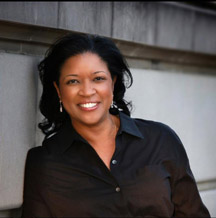 Using her experience as an interior designer and fine art and furniture appraiser, Celeste Davis of Celeste Davis Appraisal Services opens the world of Gee’s Bend quilts and collectible appraising.
Using her experience as an interior designer and fine art and furniture appraiser, Celeste Davis of Celeste Davis Appraisal Services opens the world of Gee’s Bend quilts and collectible appraising.
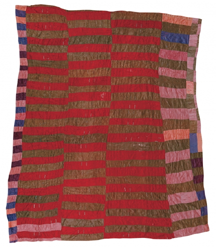 Not tethered to traditional quilts with straight lines and predictable rhythmic patterns, these quilts look like jazz! Some of the quilts retail for more than $11,000.
Not tethered to traditional quilts with straight lines and predictable rhythmic patterns, these quilts look like jazz! Some of the quilts retail for more than $11,000.
The journey from Gee’s Bend, Alabama to New York City is 1093 miles. In 2003, I joyfully traveled the 225 miles from Washington, DC to New York City to see the quilts, which were born out of necessity.
The exhibit, ”The Quilts of Gee’s Bend” at the Whitney Museum of American Art resonated with me in such a way that I’ve never forgotten their beauty and the feeling of awe as I walked through the exhibit. As an appraiser, I knew that I would be introduced to highly collectible “hot items.”
Gee’s Bend is a small rural Black community surrounded on three sides by the Alabama River. Whites shut down the ferry to prohibit Gee’s Bend’s residence from registering to vote in 1967.
This isolation fostered the necessity to use materials on hand to make needed items such as quilts to stay warm during cold nights and ironically produced a creative vacuum for the quilters. Because of their limited access, the women used old jeans, worn out men’s works shirts, and left over scrap material for their artistic expression. The New York Times art critic, Michael Kimmelman, compared them to the works of great artist such as Matisse and Klee.
The quilts are abstract, free creative expressions of color and strong geometric patterns sewn on three-dimensional palettes. Not tethered to traditional quilts with straight lines and predictable rhythmic patterns, these quilts look like jazz!
A work by Nell Hall Williams (see photo), for instance, created a rhythm different from the others. In her quilt, she created an emphasis on line that is punctuated by color. The two elements encouraged the eye to move from one abstract line to the next - - note how freely the lines move in and out of perfection and dart around the irregular borders to the left and right of the piece. The quilt has elements of both predictable rhythm and abstract form which delight as one delves into its details.
Some of the quilts retail for more than $11,000. Owning one of these beautiful quilts is a wise investment.
As an appraiser, there are several key factors that help me to determine the fair market value (FMV) of a piece of art like the Gee’s Bend quilts. First, upon inspection, I would note the condition of the quilt, view a photograph of the quilt, measure the piece, and discuss the provenance with the owner. Next, I would research the exhibition history of the quilt and research the auction and retail sales history of similar quilts. After gathering and synthesizing all of this information, I would provide the owner with the FMV.
Getting a formal appraisal is pricey and can cost more than the item itself. For this reason some appraisal firms, including mine, provide a Restricted Appraisal (RA). The RA is less expensive. Most appraisers require only a photograph of the item to begin the process.
Watch this Youtube video clip on the quilts of Gee’s Bend
Black Memorabilia and Collectible Show - Baltimore

Vendor Discount for Baltimore Show
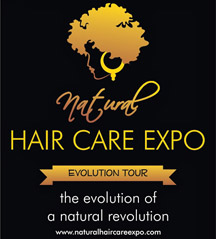 Port Of Harlem readers get at 10 percent discount off the booth space.
Port Of Harlem readers get at 10 percent discount off the booth space.
The 16th Annual Baltimore Natural Hair Care Expo takes place Saturday, April 1 and Sunday April 2 at Coppin State University. “In 2016, we had more than 10,000 people to attend the show,” says Malaika Cooper, the show’s organizer.
Booth prices range from $350 to $700. Cooper is offering Port Of Harlem subscribers 10% off their booth price. To receive the discount, write “BNHCE:Port of Harlem to get 10 percent off,” on your booth application. (Your Port Of Harlem subscription is subject to verification.
Port of Harlem subscriptions are free.)
“This is the 16th year of bringing together thousands of people, vendors, presenters, musicians, and artists to celebrate and support the natural hair, health, and wellness community,” added Cooper, with three events in one:
- Baltimore Beard and Barber Expo 2017
- Baltimore NaturalhairCareExpo 2017
- Baltimore Skin and make up Expo 2017
Activities
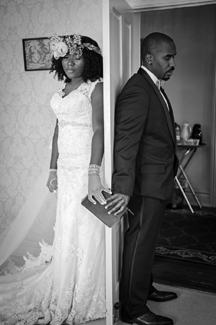 Photo by Arnold Johnson.
Photo by Arnold Johnson.
Washington
The Hard Problem
Studio Theater
14 & P Streets, NW
now through Feb 19, $
I Wanna F*Cking Tear You Apart
Studio Theater
14 & P Streets, NW
now through Feb 19, $
Colors of Life: The Exposure Group Traveling Exhibition
Center for the Arts At the Candy Factor
9419 Battle Street
Manassas, VA
through Fri, Mar 3, free
The Game
MetroStage Theater
1201 N Royal
Alexandria, VA
now through Mar 12, $
Dr. Runoko Rashidi
The Davis Center
6218 3rd Street, NW
Fri, Feb 3, 7p-11p, $10
Children under 12, free
Screening of Akwantu: The Journey - A Documentary
The Thurgood Marshall Center
1816 12th Street NW
Sat, Feb 4, 10:30a-12:30p, $10 APPEAL non-members
U.S. Army Blues Jazz Quintet
Dorothy I Height Benning Neighborhood Library
3935 Benning Road, NE
Sat, Feb 4, 2p. free
Reclaiming MLK
panelists include James Early
Institute for Policy Studies
1301 Connecticut Avenue NW, 6th Floor
Mon, Feb 6, 6p -7:30p, free
Understanding the History of Muslims in America
America's Islamic Heritage Museum
2315 Martin Luther King Jr. Ave
With Historian and Curator Amir Muhammad
Sun, Feb 12, 4p-5:30p
Baltimore
4rd Langton Hughes Book Fair & 25th Black History Program
Empowerment Temple AME Church
4217 Primrose Avenue
Sun, Feb 5, 9a-1:30p, free
Walking While Black: L.O.V.E. is the Answer
Owen Brown Interfaith Center
7246 Cradlerock Way
Columbia, MD
Sun, Feb 5, 1:30p-4:30p, free
Chicago/Gary
Winter Fun at Indiana Dunes National Lakeshore
Paul H. Douglas Center for Environmental Education
7-85 N Lake St
Gary, IN
Every Sat though Feb 18, 9a-4p, free
New York
Frederick Douglass and the Women He Loved: A Discussion
Sister's Uptown Bookstore & Cultural Center
1942 Amsterdam Avenue at W. 156th Street
Tue, Feb 7, 6p, $0-$10 suggested
USA – Nationwide
Read Africa Week
at your local library
Coming
Black Memorabilia Show
Reginald F. Lewis Museum
830 E Pratt Street
Baltimore
Sat, Feb 11, 10a-5p, $

On Website 
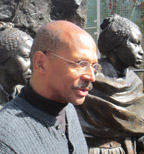
CR Gibbs
(2nd
consecutive)
On Facebook 






















